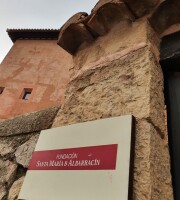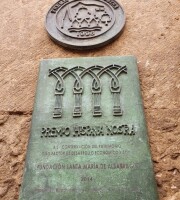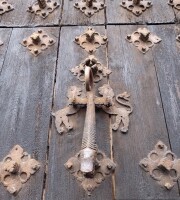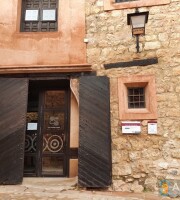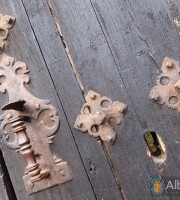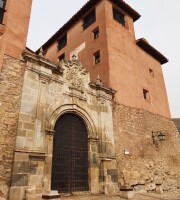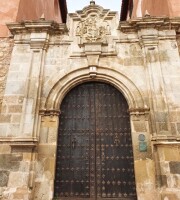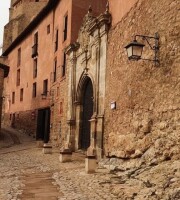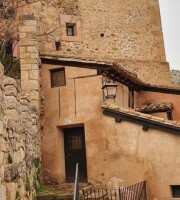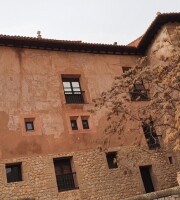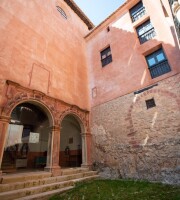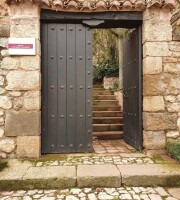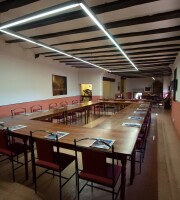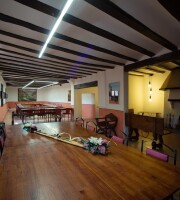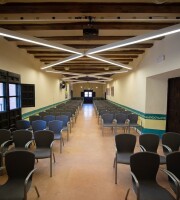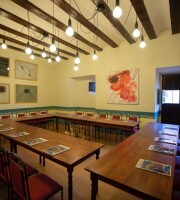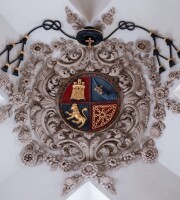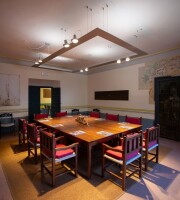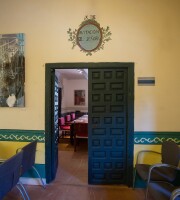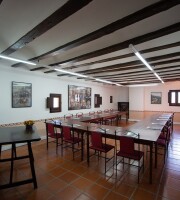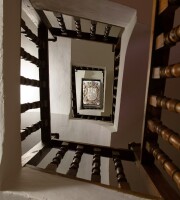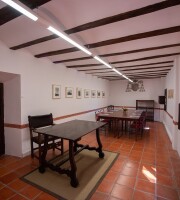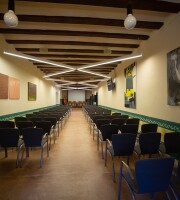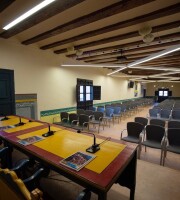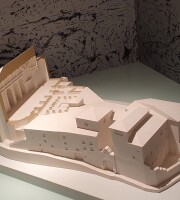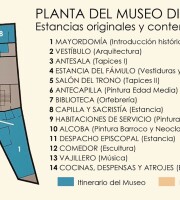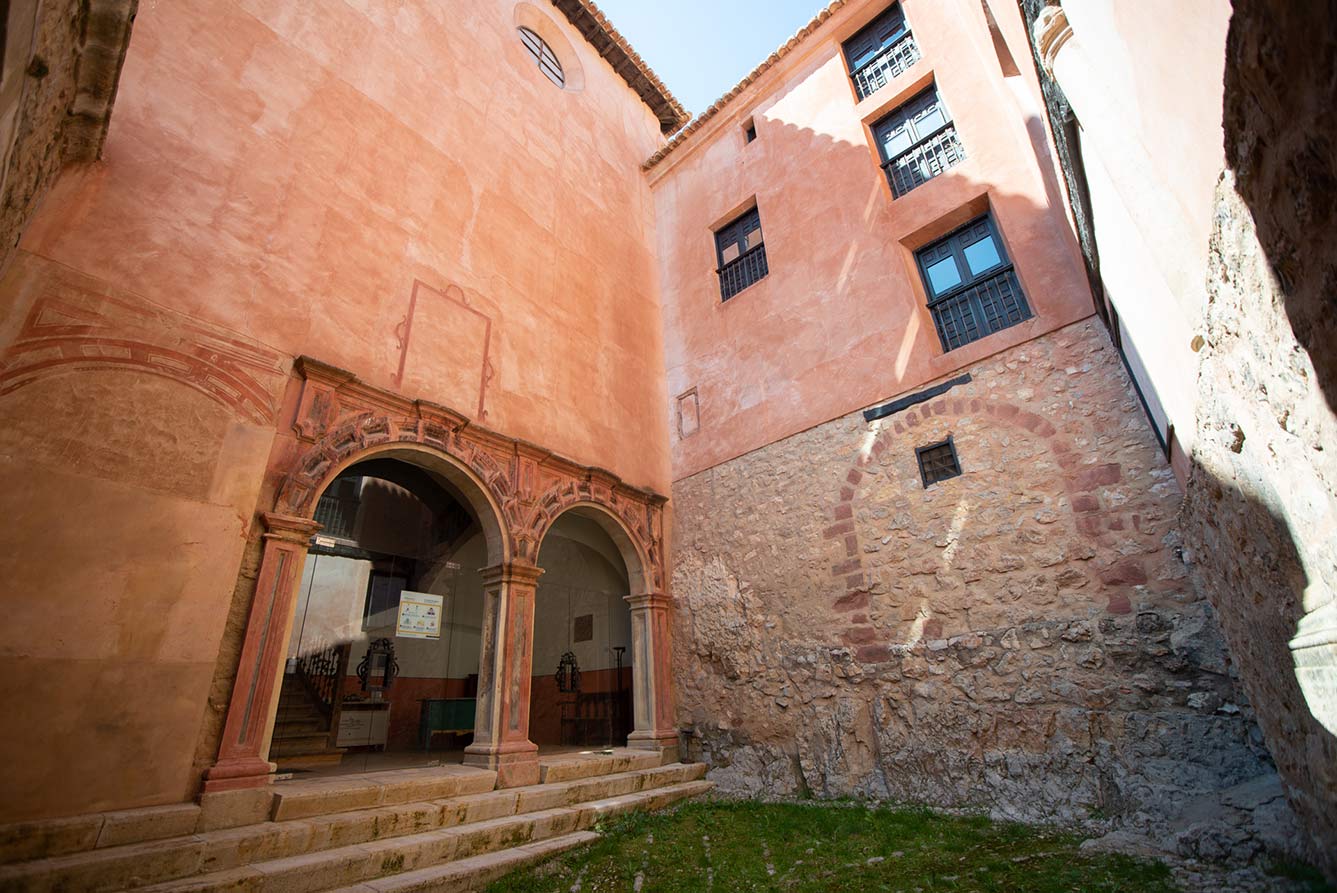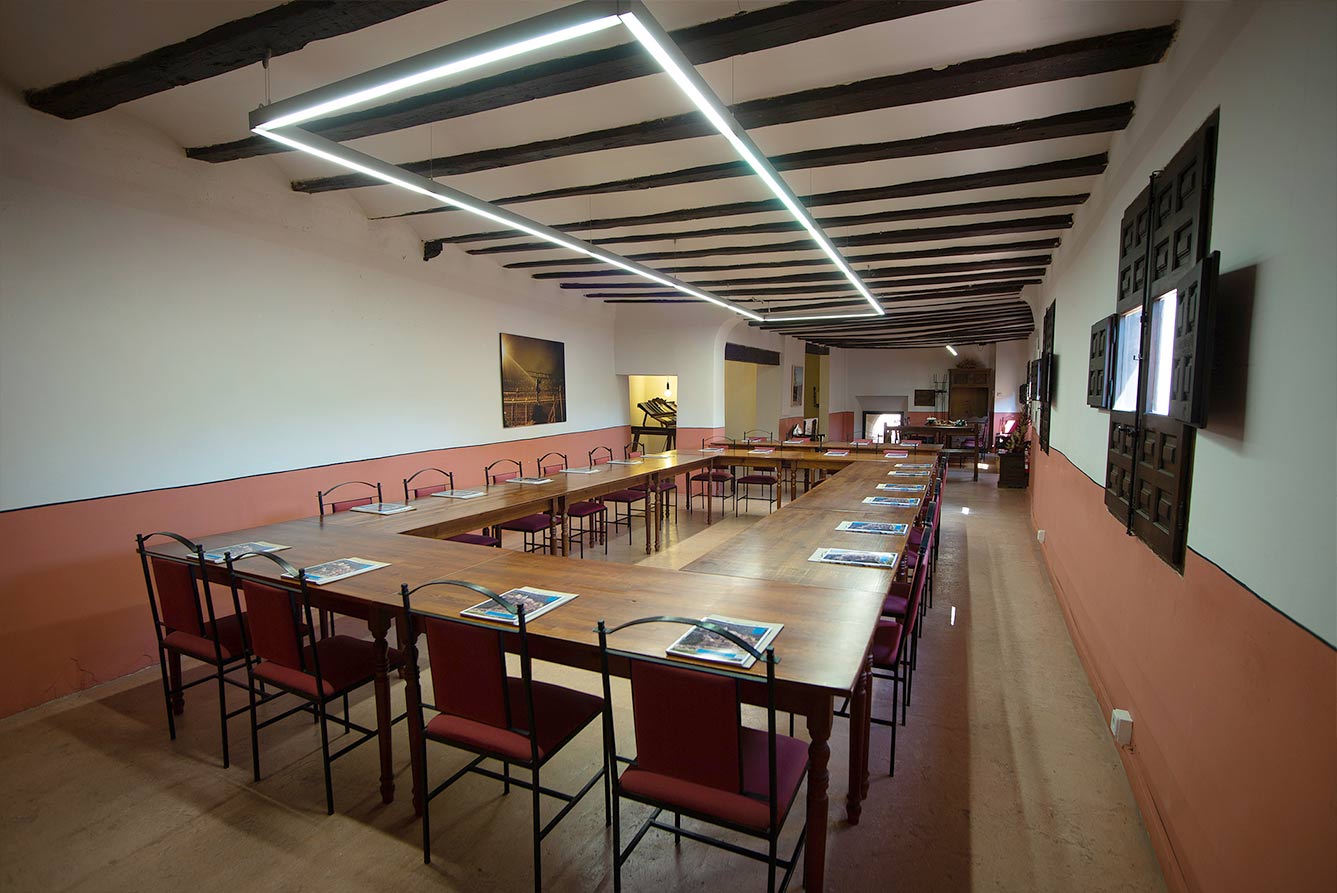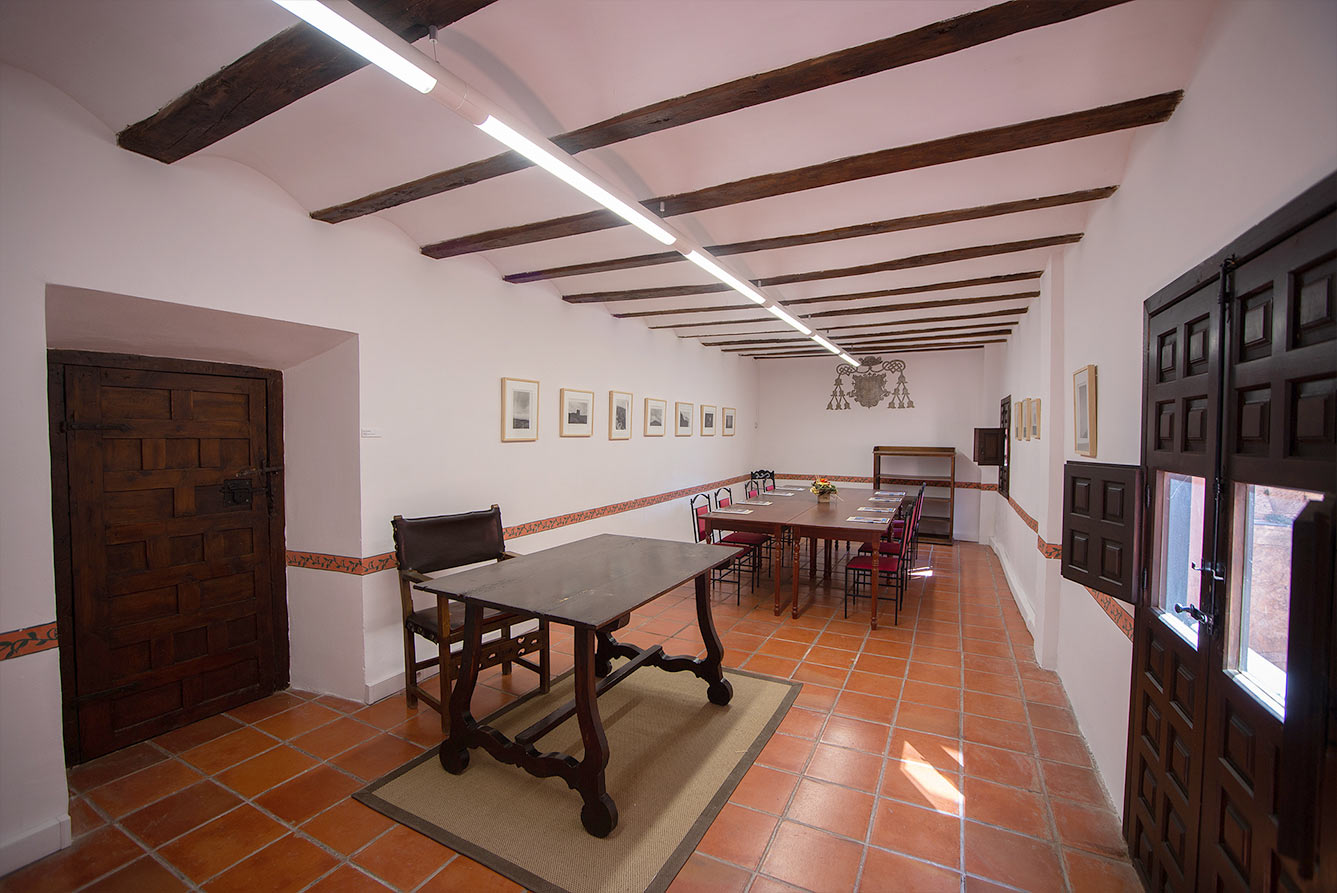Episcopal Palace
The Bishop’s Palace or Episcopal Palace, linked to our Cathedral via the sober cloister, is the most important residential building in the city of Albarracín. Its current 18th-century design and configuration is attributed to the mandates of bishops Juan Navarro Gilaberte, Juan Francisco Navarro Salvador y Gilaberte and José Molina Lario. The spaces and rooms of the Episcopal Palace are an interesting and admirable example of the domestic architecture of the 18th century and evoke, in turn, the way of life of those who governed one of the most modest bishoprics of Spain in the Age of Enlightenment.
The materials used in its construction were those provided by the surrounding natural environment; that is, Jurassic limestone and Rodeno red sandstone, lime mortar, gypsums of different hues (ochres, bluish greys and intense reds; the latter being the most widely used and which provides the city with is characteristic colour), wood (wild pine or oak, mainly), wrought iron and ceramics. In any case, it should be highlighted that both plaster and wood are the fundamental components of the city’s architecture.
Its main façade opened to the small square and displayed a doorway of exquisite limestone stonework with a beautiful usable door with iron hardware, knockers and studs that communicated with a small patio. In the patio, two stonework arches open to the entrance, which is almost entirely occupied by wide staircases with wooden handrails and wrought iron railings that end in a typical spire-skylight in whose roof we can see the episcopal coat of arms of Bishop Juan Francisco Navarro Salvador Gilaberte – the same as appears on the portico of the Palace entrance.
The first floor of the episcopal complex housed a large hall and the private rooms of the Vicar General. These rooms are currently the assembly hall and other spaces authorised for meetings, talks, technical workshops and cultural events of the Meeting and Conference Centre of the Fundación Santa Maria de Albarracín, the region’s main cultural engine; this foundation carries out extraordinary restoration work on cultural heritage – tangible and intangible – which, in short, projects it as a national reference on the subject.
The main floor of this emblematic building that evokes the 18th century housed the private rooms of the bishop or prelate and the diocesan administrative rooms. The distribution, detail and planning of the private rooms, chapel, common rooms, kitchen, grain stores, etc. resembled that of a palatial home of the period.
An interesting fact: on the top floor of the palace, which is also the highest point of the city, the halls and rooms that served as residence to the bishop have been preserved and currently house the Diocesan Museum.
At the same time, the main chapel is located there, which is accessed by a double door decorated with architectural motifs, one of which says: HAEC PORTA DOMINI JUSTI INTRABUNT IN EAM (THIS IS THE DOOR OF GOD, THE RIGHTEOUS WILL PASS THROUGH IT). The provincial Baroque style of the decoration of its walls and vault is surprising, as is the ornate golden and polychrome altarpiece. The Baroque atmosphere and the theatrical nature of the ensemble are impressive, and particularly noteworthy are some paintings with intriguing clerical figures that stick out behind trellising and curtains and that, in short, appear to be guarding the place.
The Diocesan Museum – as you will see in another section – exhibits some interesting pieces of jewellery, imagery, paintings and other objects of worship and adornment (16th-century Flemish tapestries from the Brussels-Bravant factory, etc.), originating mainly from the Cathedral and other churches within the diocese.
The spaces not dedicated to the Diocesan Museum are used for the Albarracín Meeting and Conference Centre and the offices of the Fundación Santa Maria de Albarracín, dedicated to multiple cultural activities and the restoration of the heritage in the City of Albarracín and its Community; as well as, in other territories of our province and Autonomous Community, as previously mentioned.
